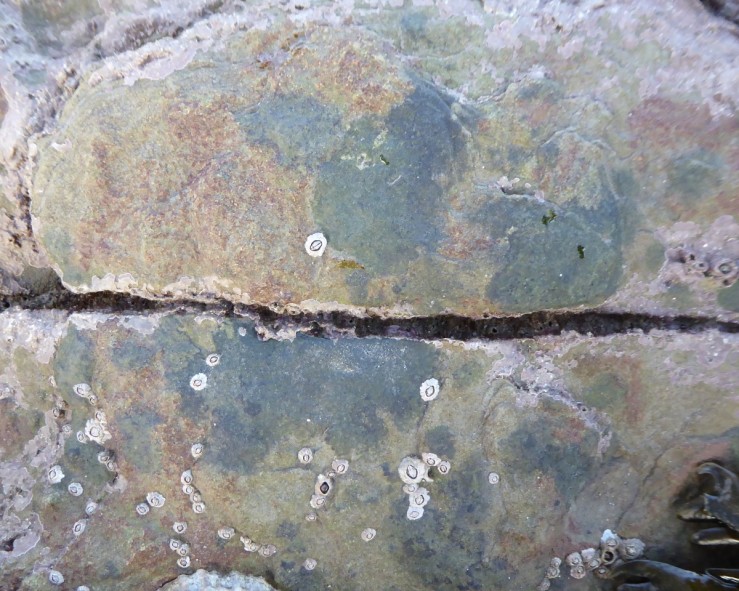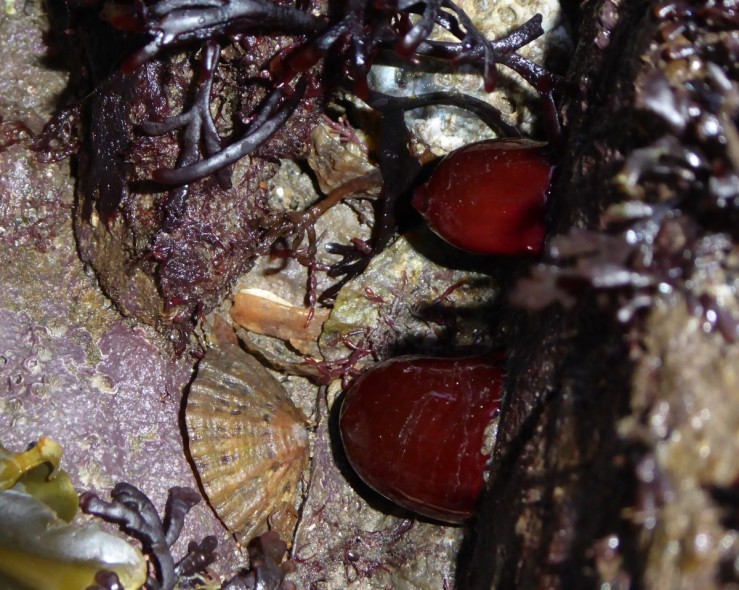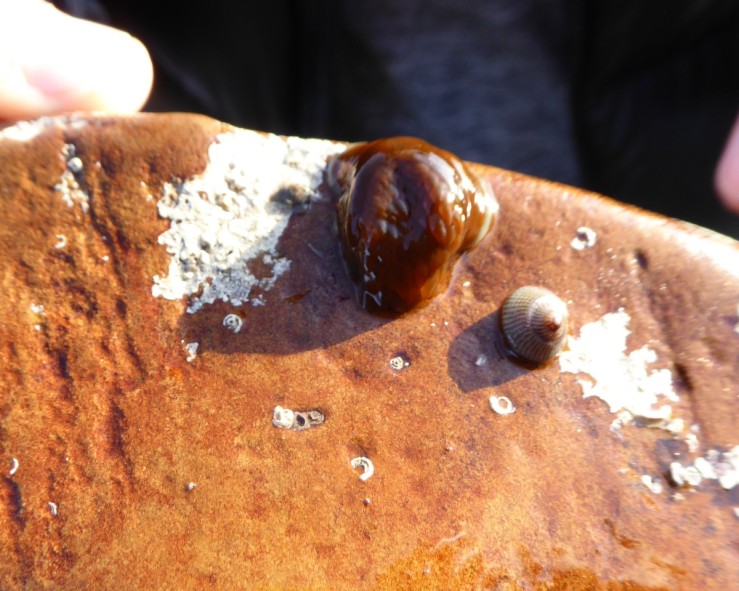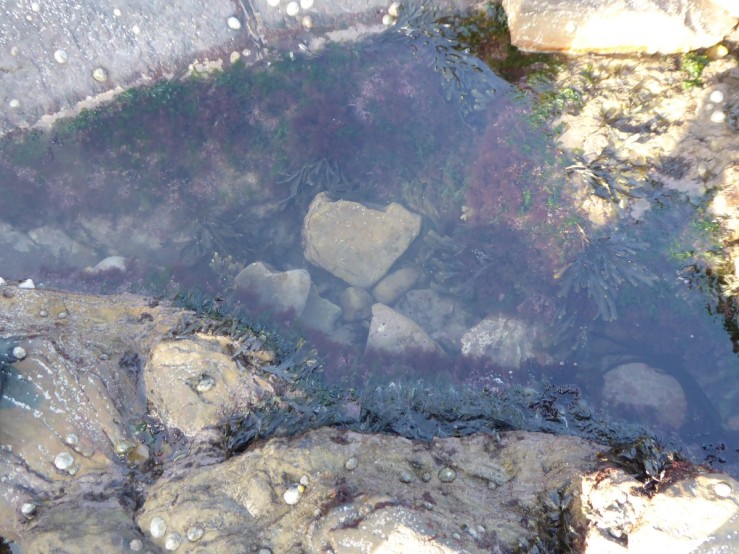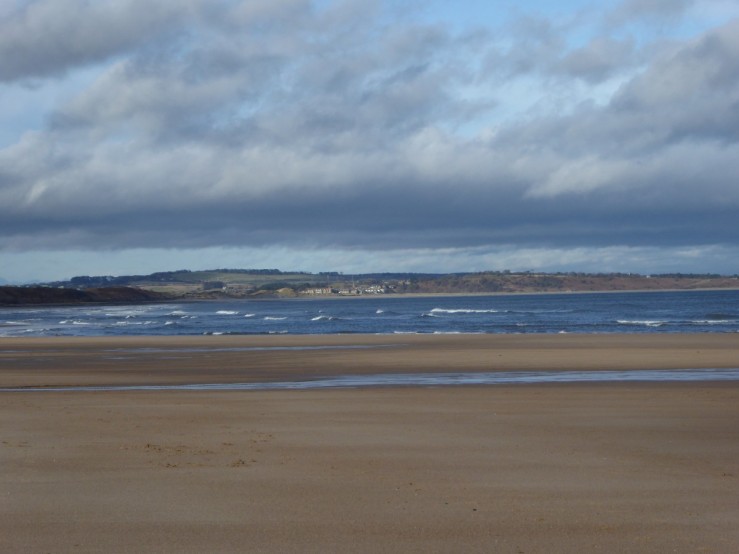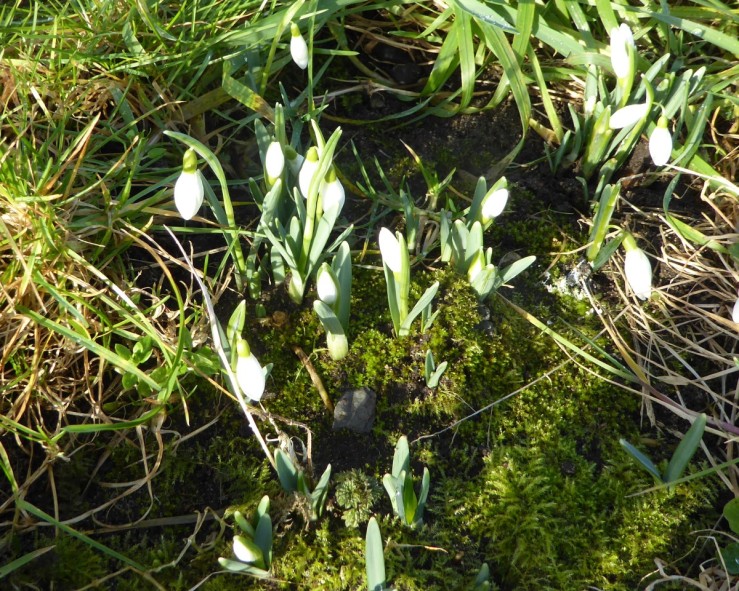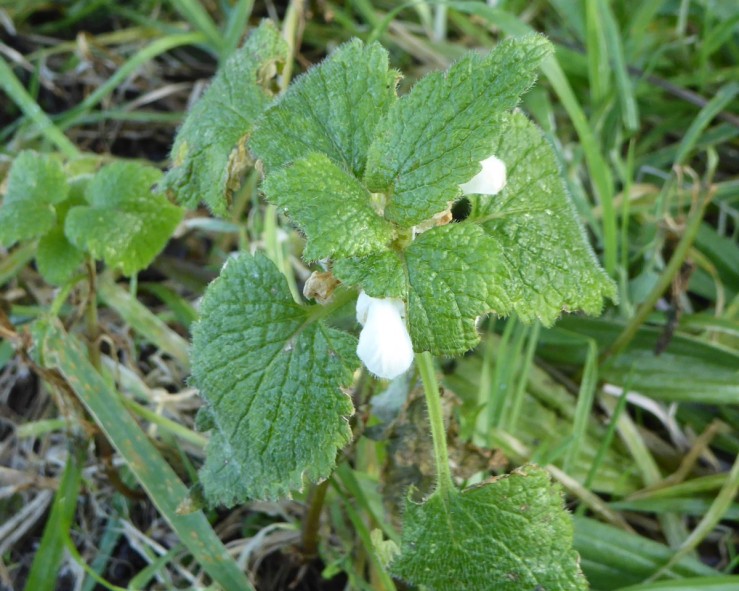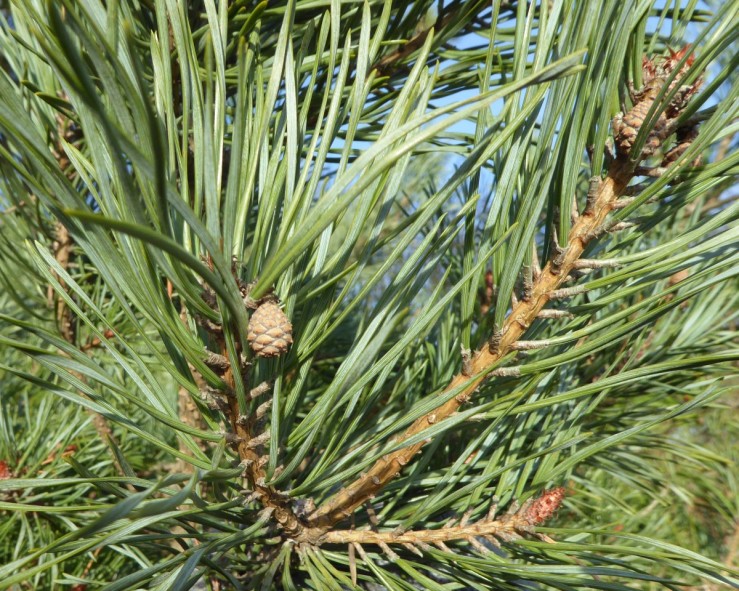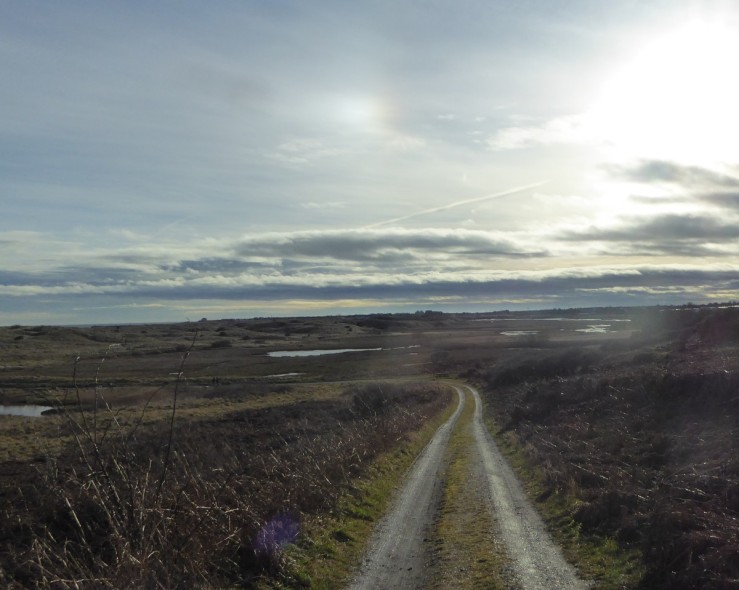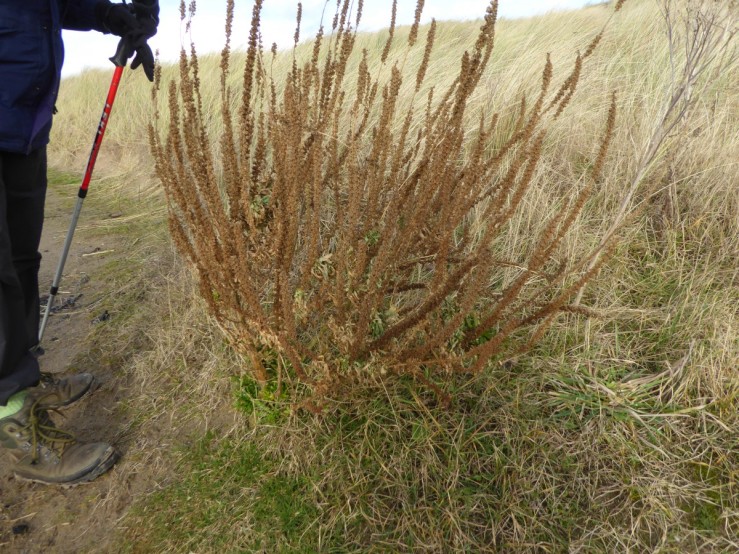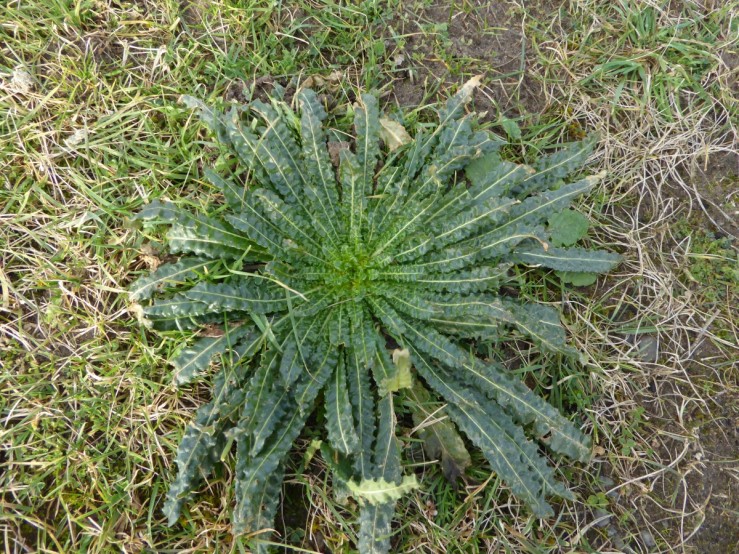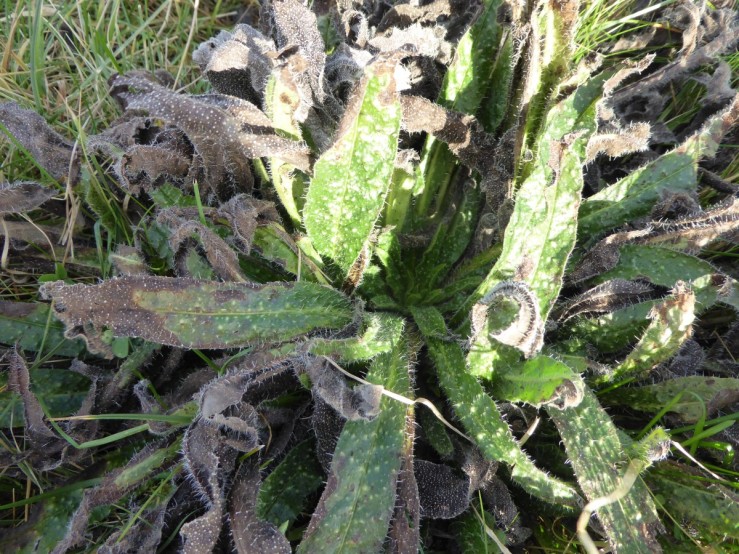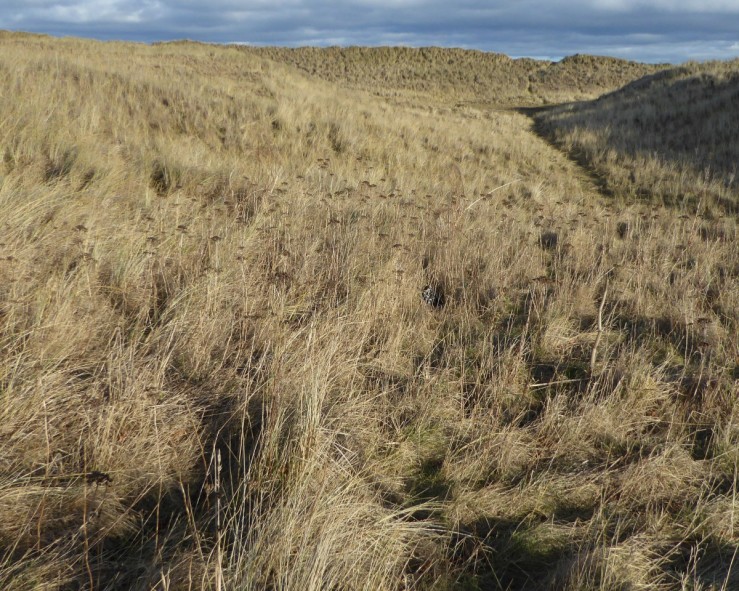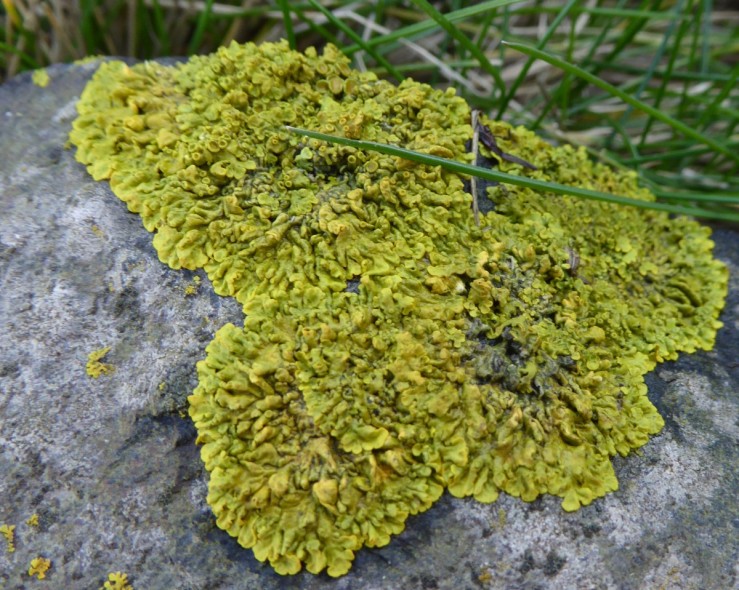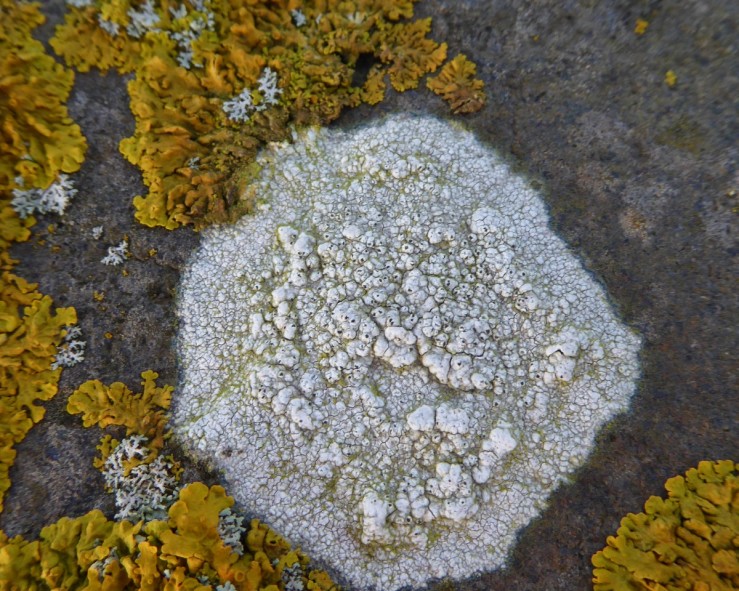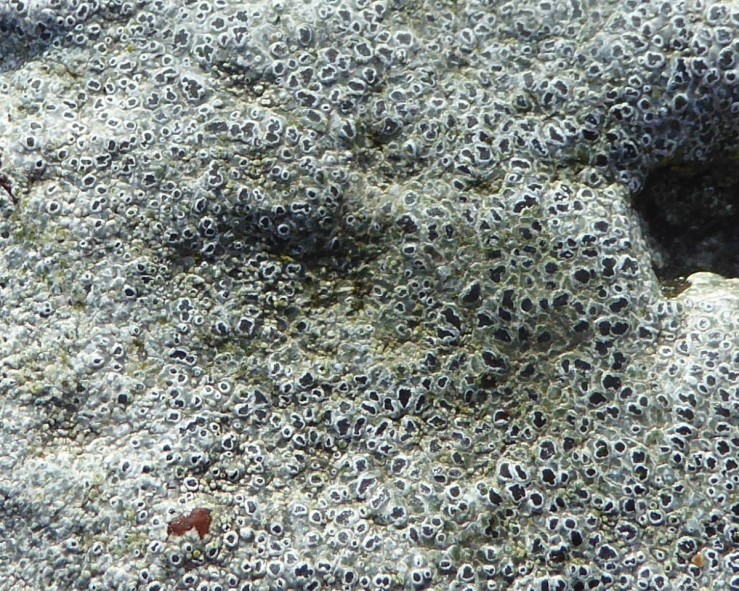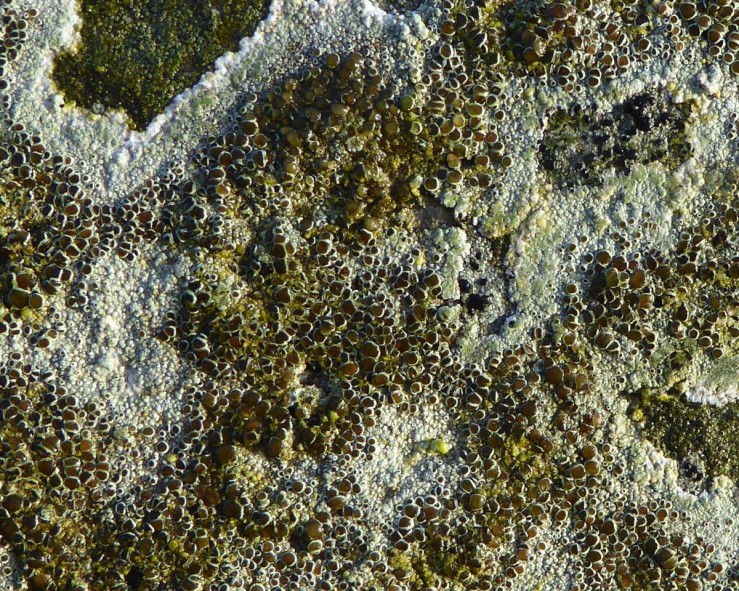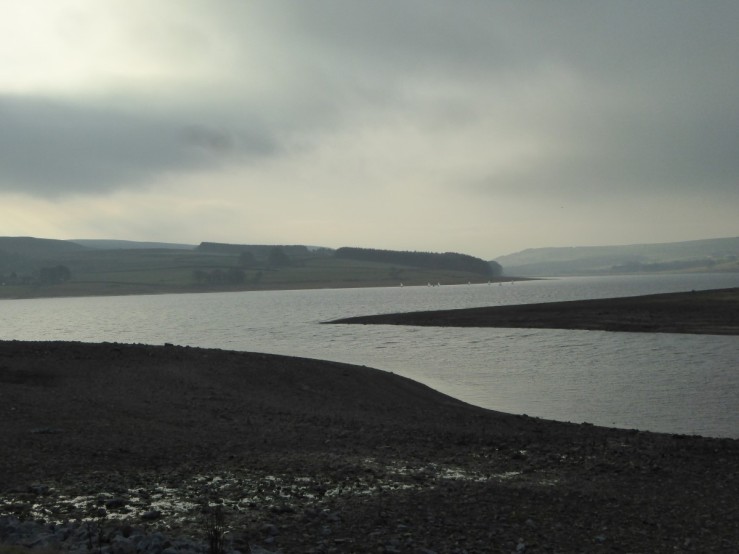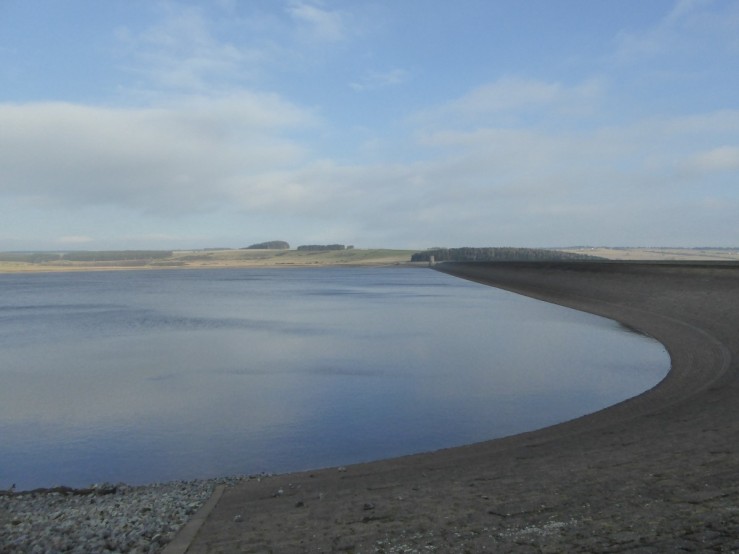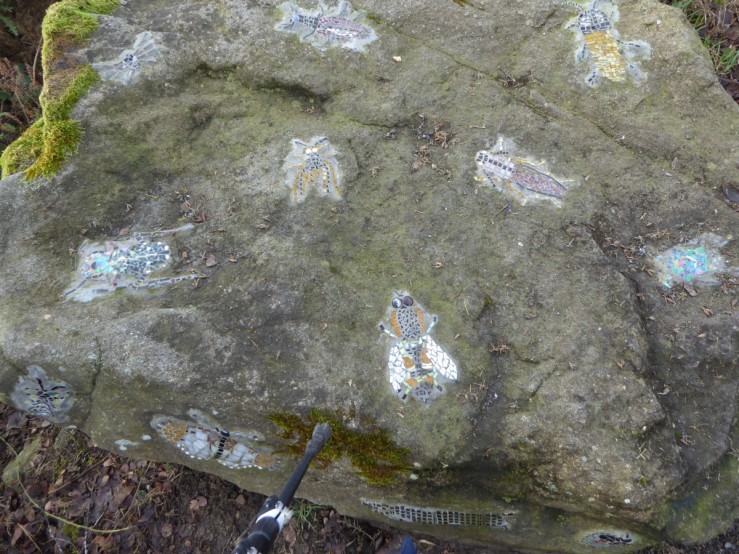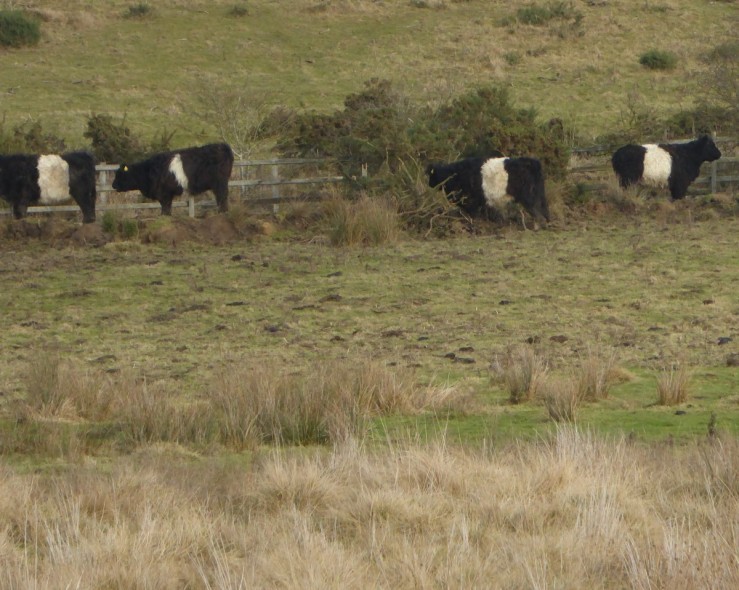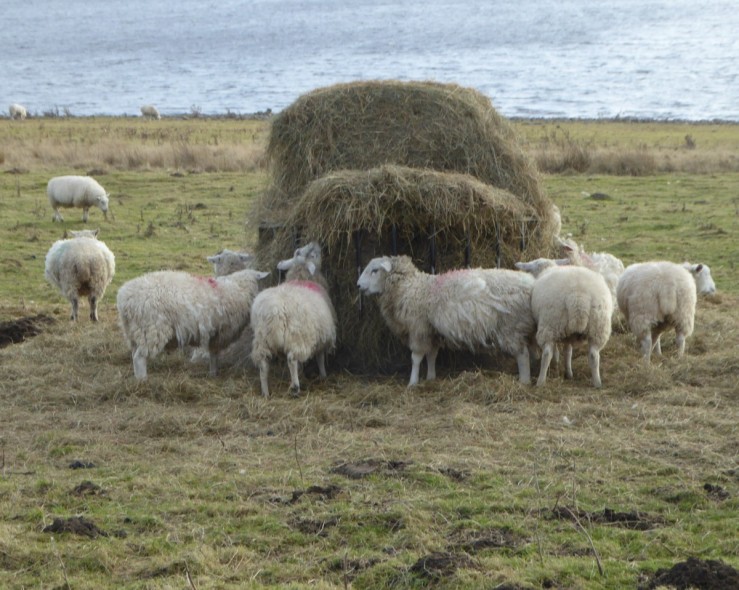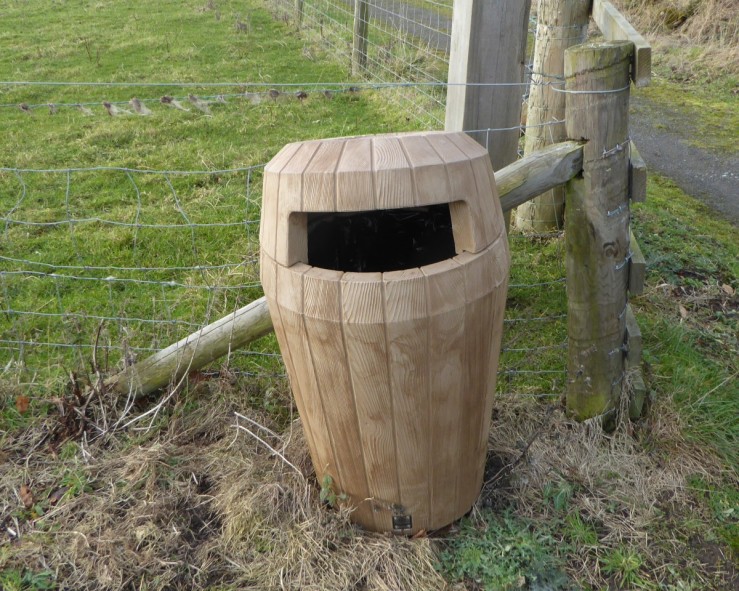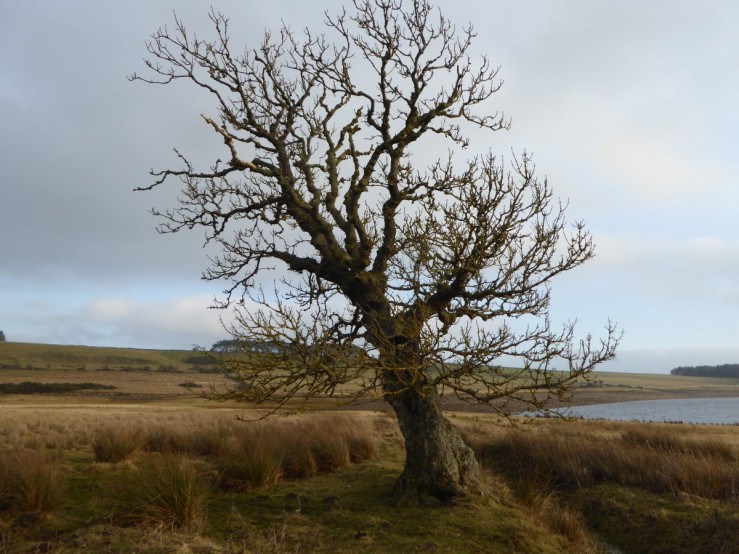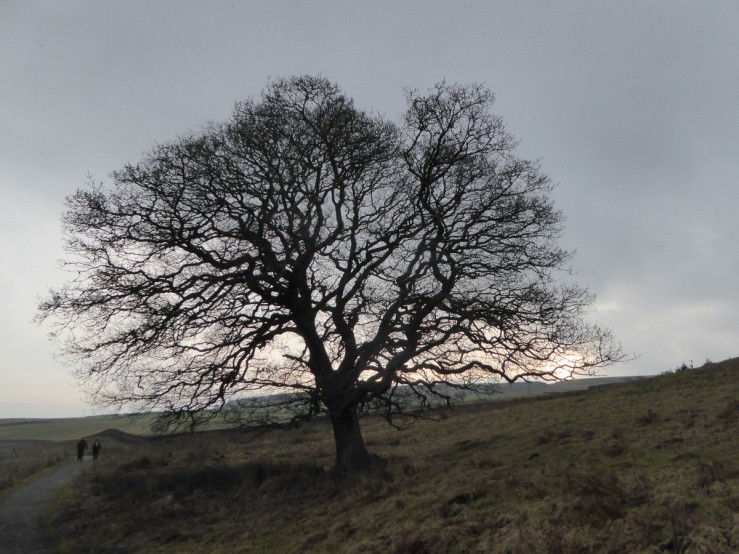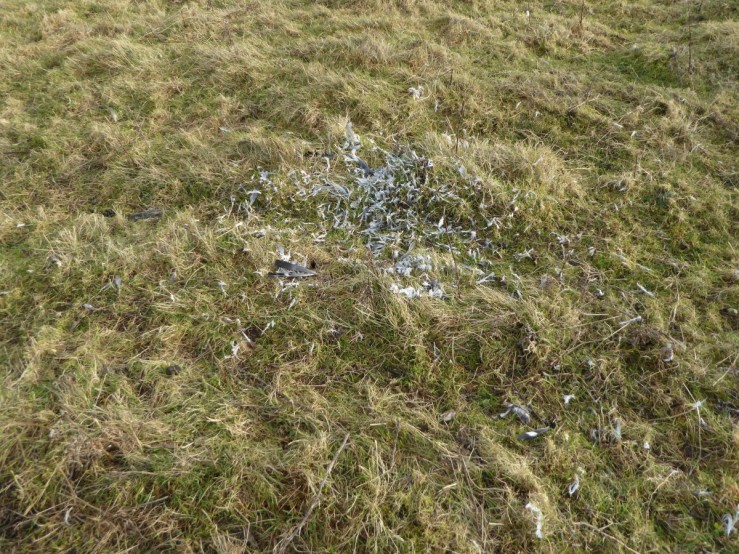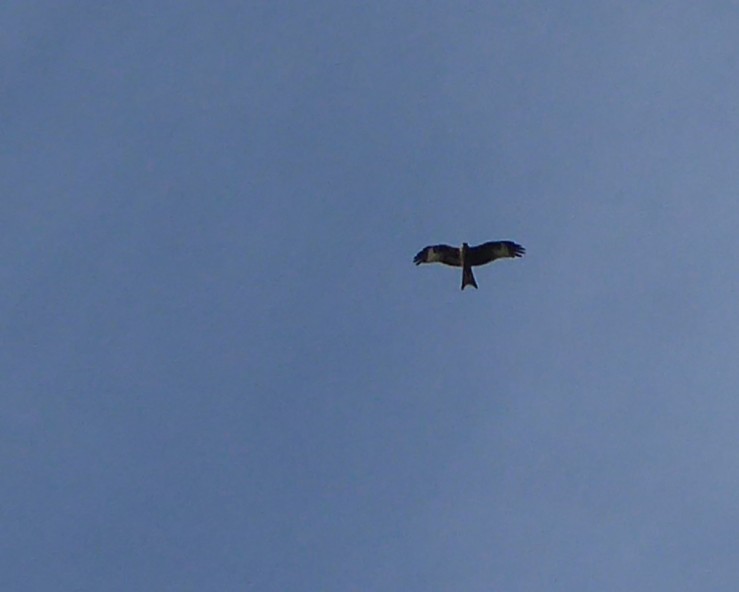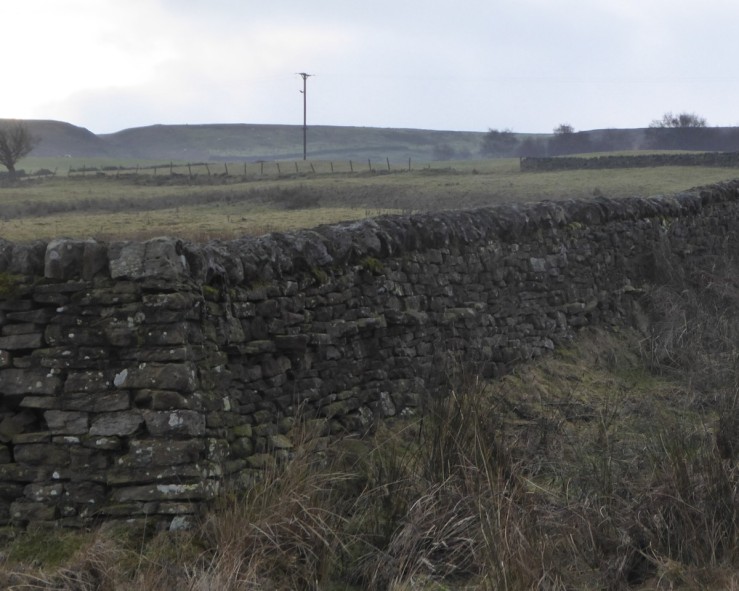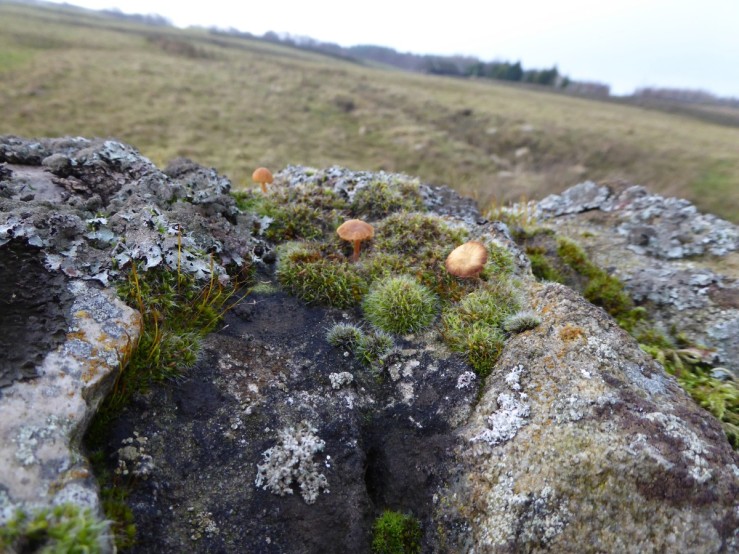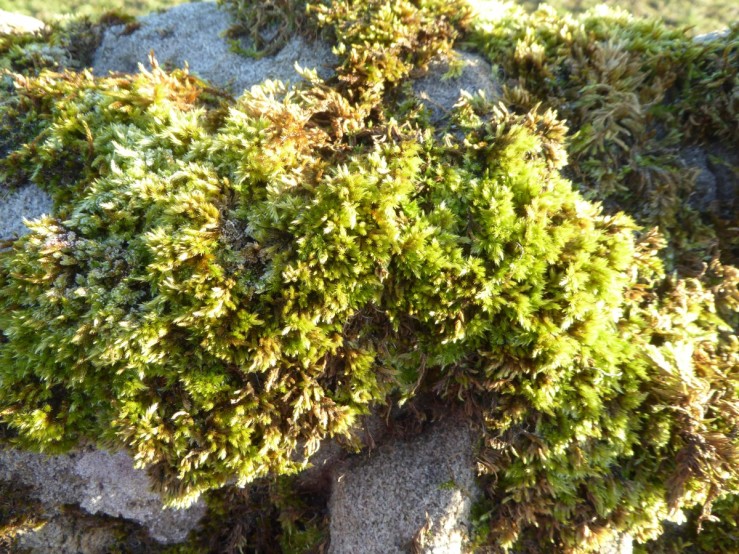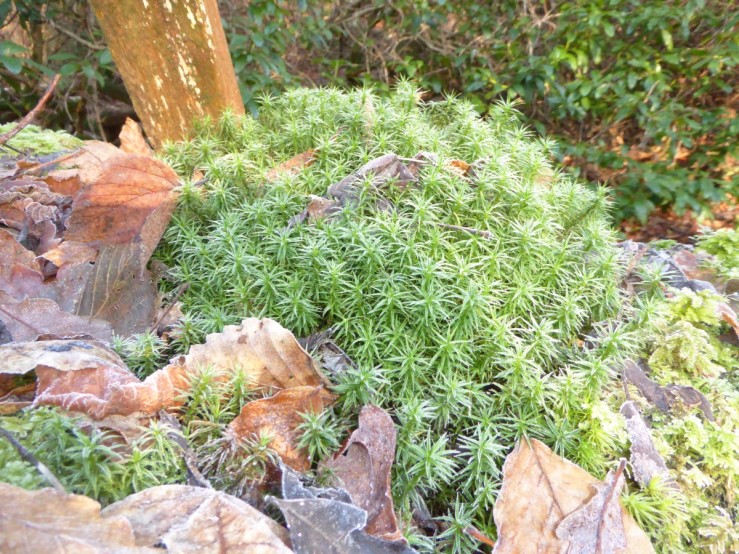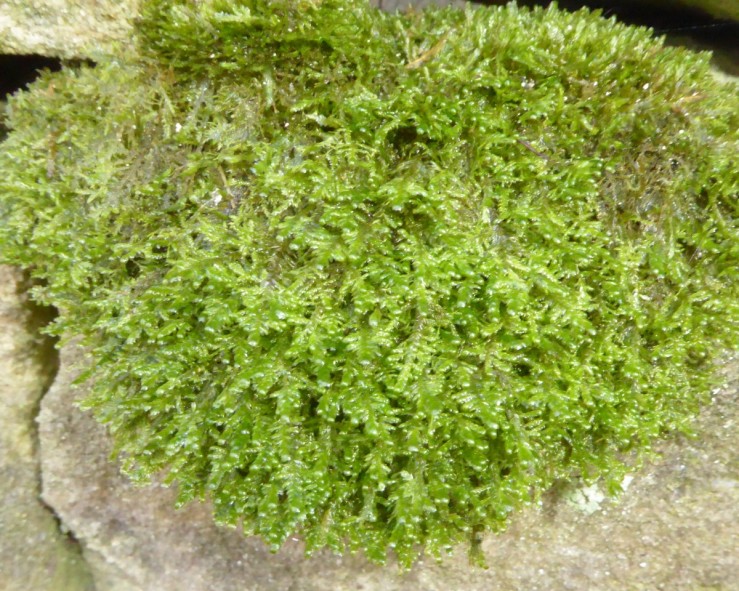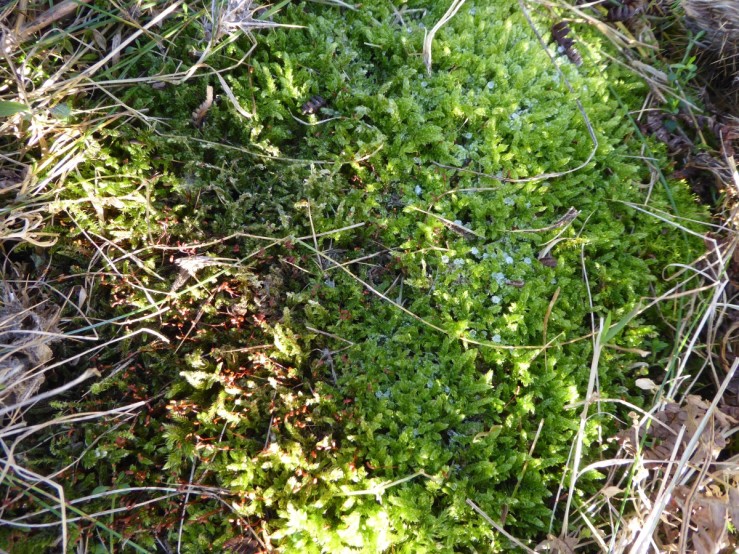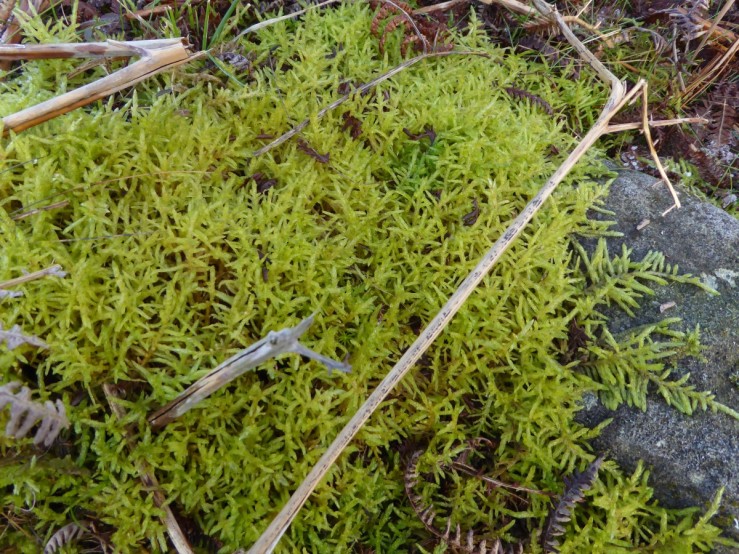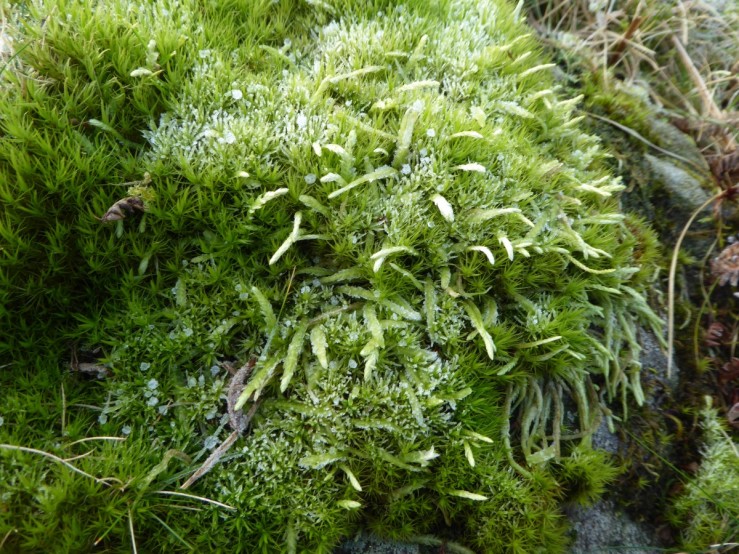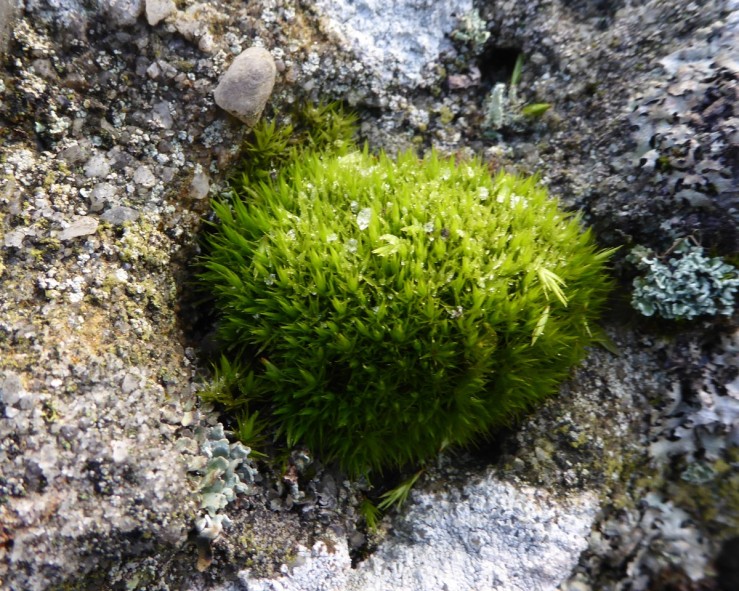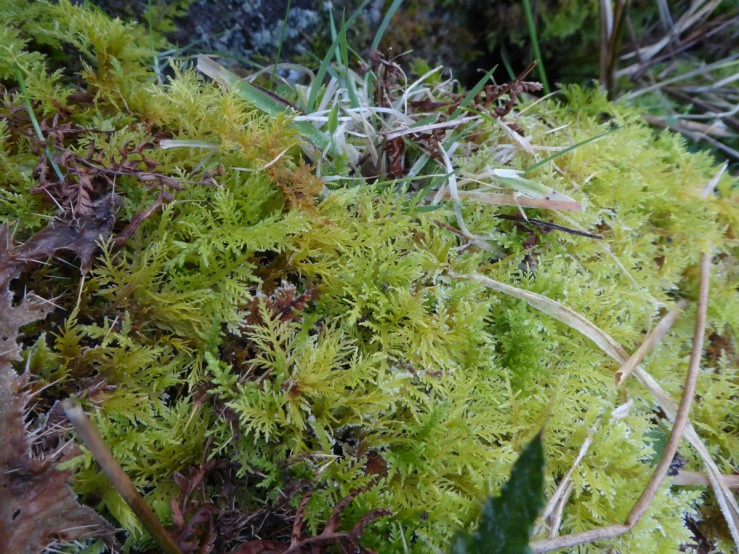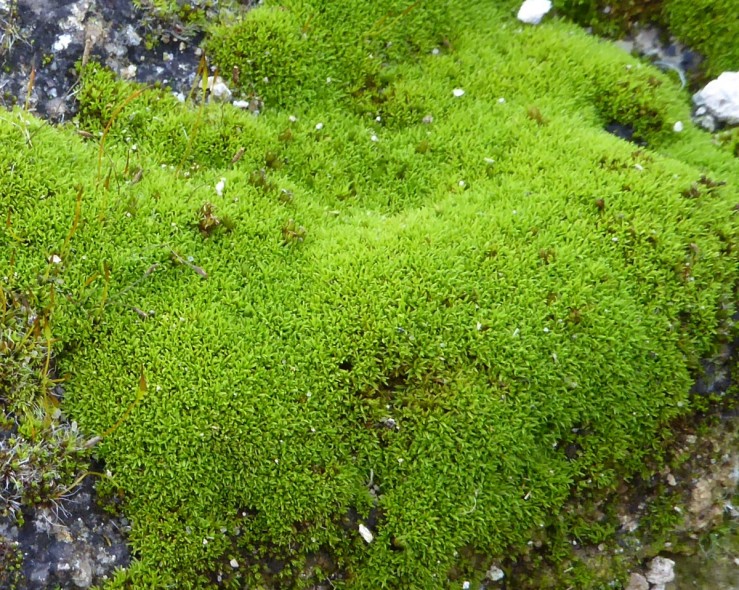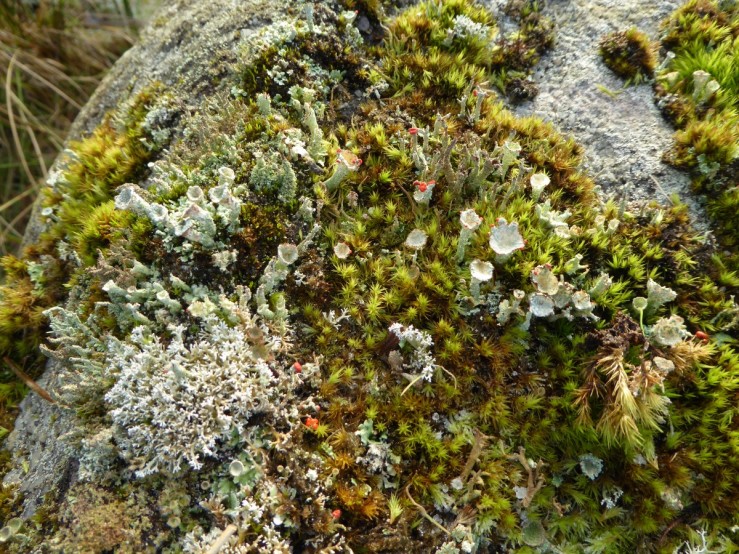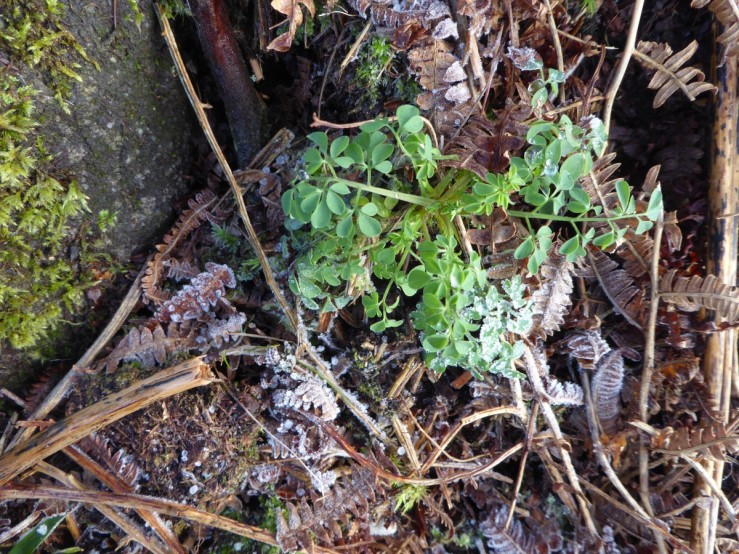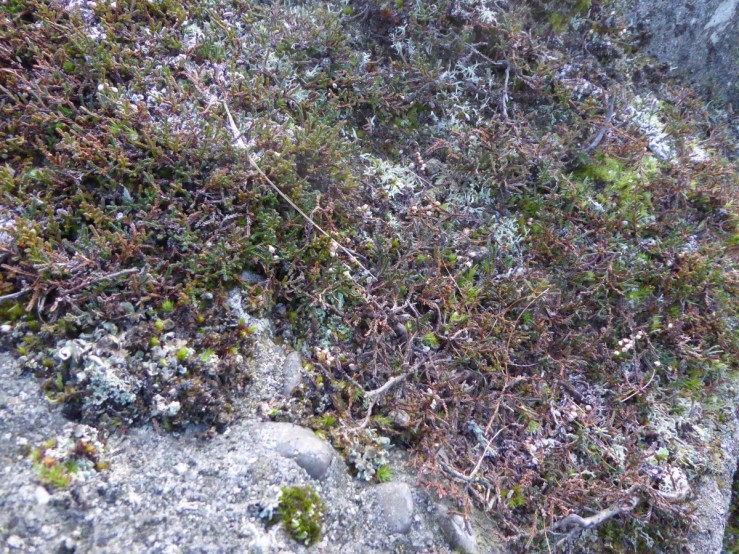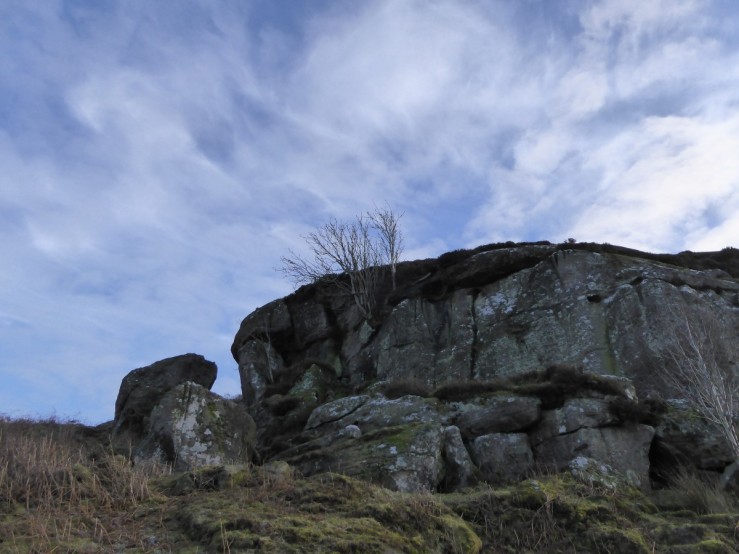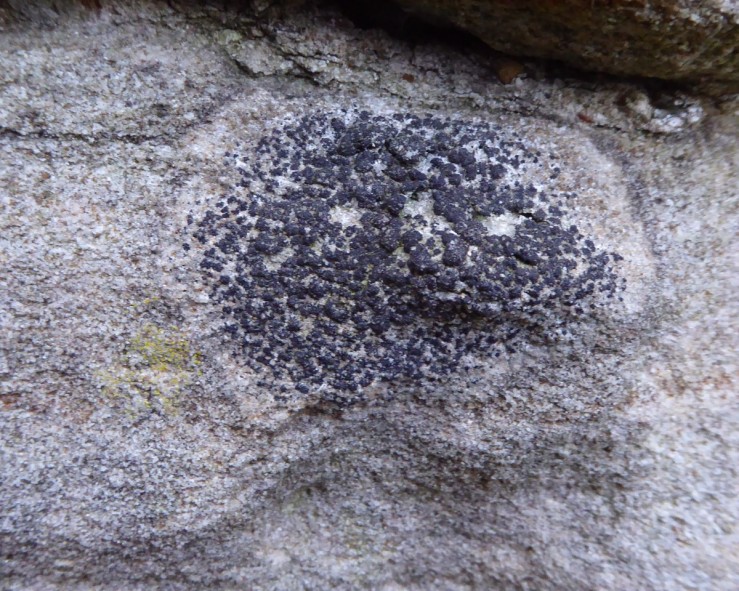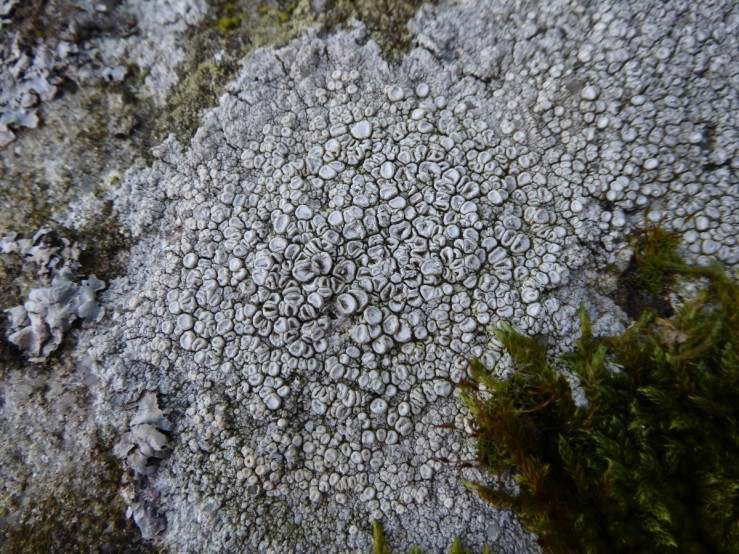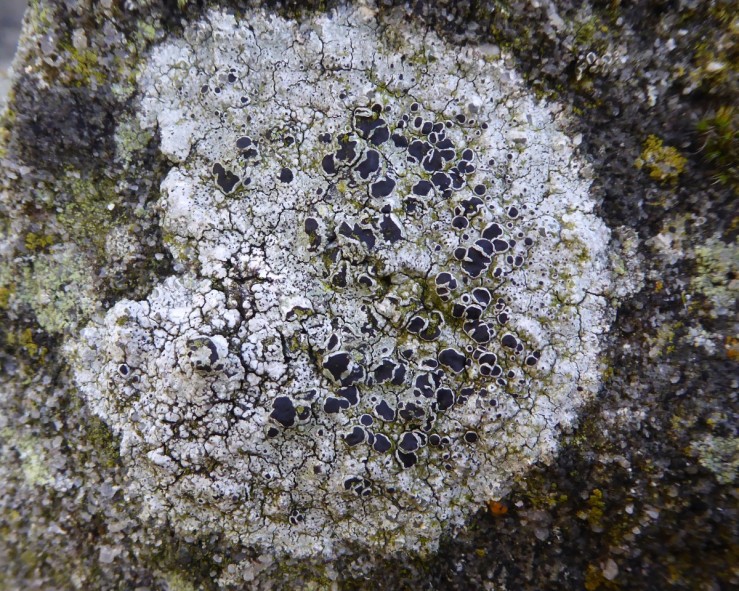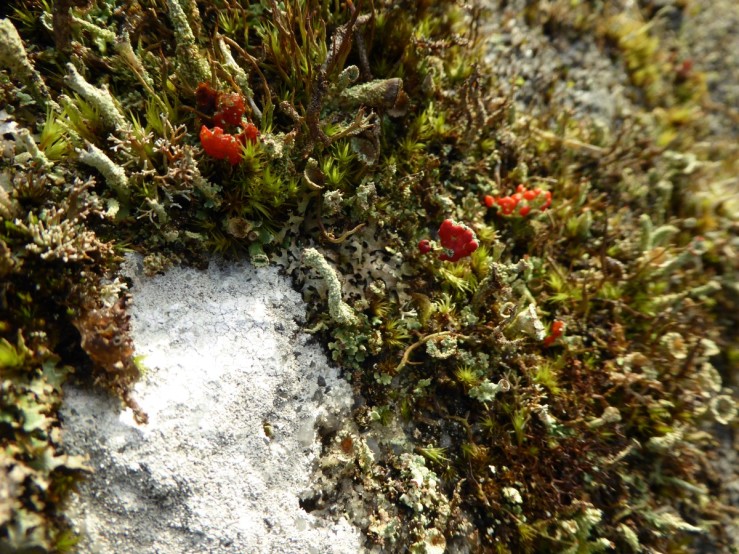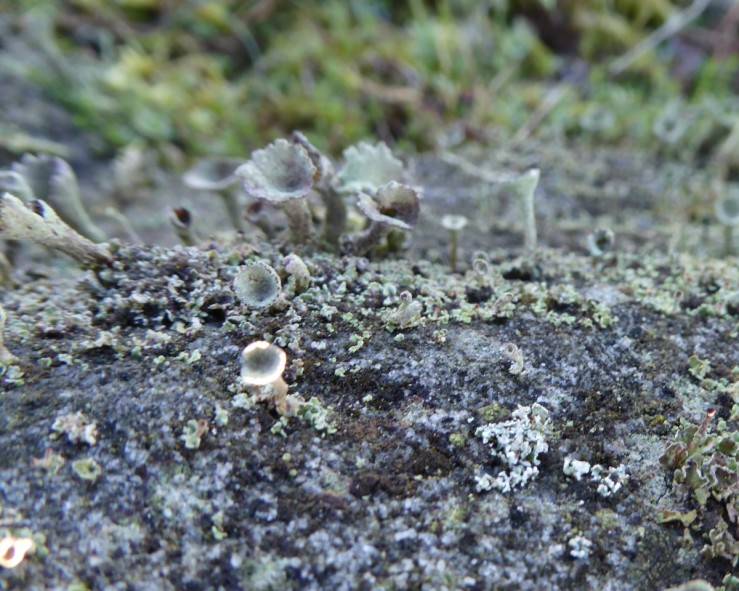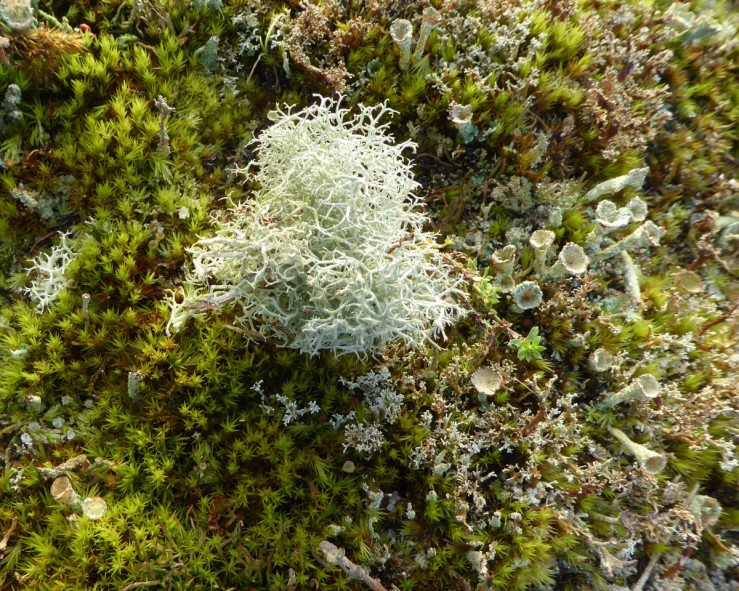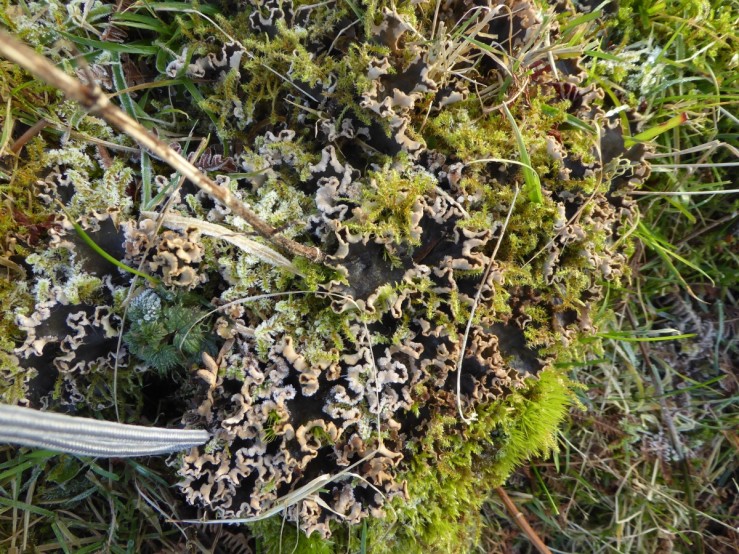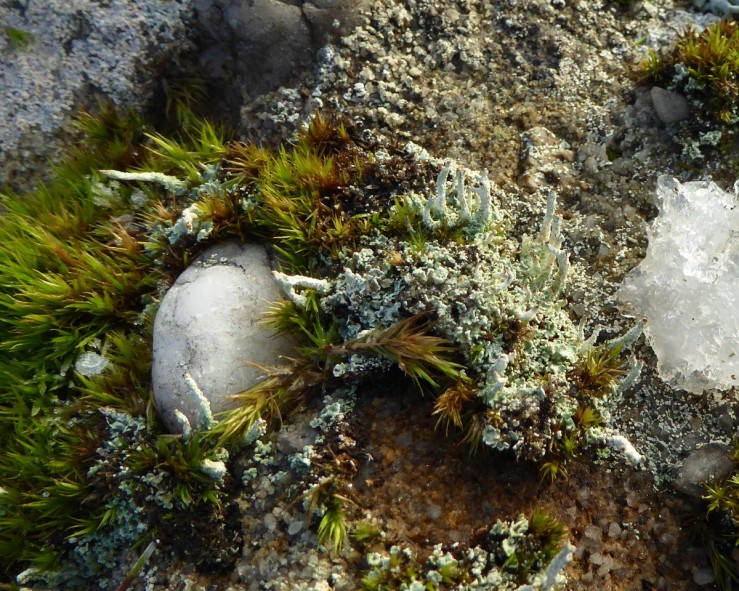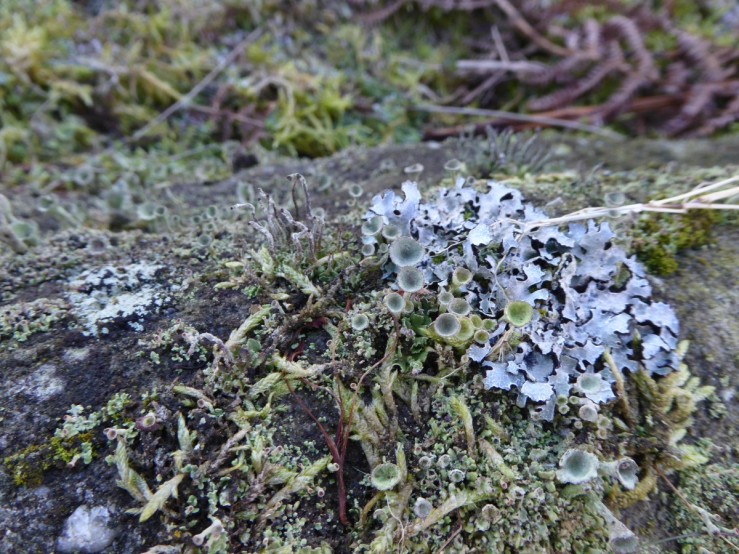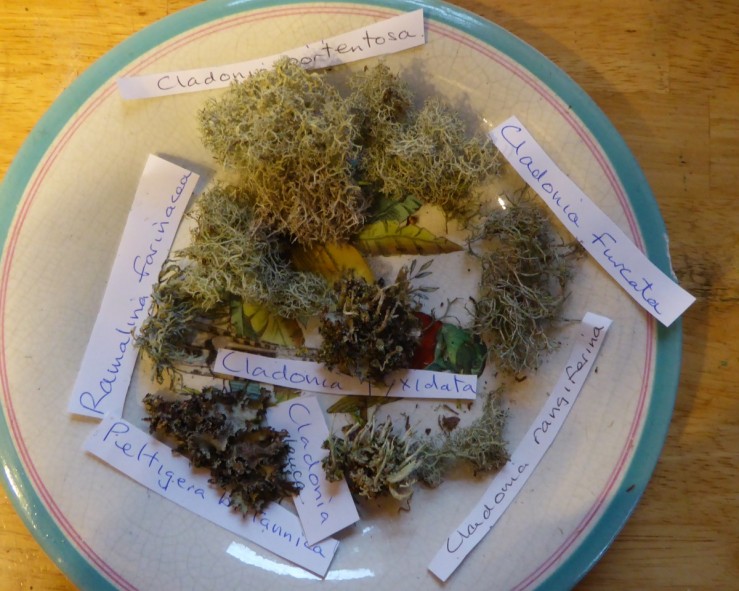
A view of the rocky shore of this Local Nature Reserve. There is cliff top grassland, wetland, tidal and sub-tidal habitats, a small semi-tidal island and a fresh-water pond. The area holds major geological, ornithological and marine interest. The rock pools are home to a wonderful array of marine life, while seabirds can be observed from the island itself. The shoreline and newly created cliff top wetland are feeding and resting sites for many waders, terns and gulls.
First to catch our eye was the seaweed growing by the causeway. Spiral Wrack (Fucus spiralis), an intertidal brown seaweed, found on the high shore is pictured below. It grows up to 40 cm long, without air bladders and lives for up to 4 years. The species can tolerate a high level of desiccation. It has both sexes on one plant.

Another splendid seaweed, Egg Wrack (Ascophyllum nodosum), is shown below. A common large brown seaweed, dominant on sheltered rocky shores. The species has long strap like fronds with large egg-shaped air bladders at regular intervals. The fronds of Ascophyllum nodosum are typically between 0.5 and 2m in length. The species grows slowly and plants can live to be several decades old.

It is often accompanied by Polysiphonia lanosa. These red tufts are an epiphytic algae that is hemi-parasitic, attached by creeping rhizoids with branches penetrating the Egg Wrack.

Some fronds of Cladophora rupestris a densely tufted green seaweed were clinging to the rocks but not smothering them.

Other green algae were covering the rocks. This one is fairly common on the North East coast. We thought it was Ulva intestinalis, a type of gutweed.

The algae pictured below is another Ulva (Sea Lettuce) species.

Buckshorn or Stagshorn Plantain (Plantago coronopus) is thriving here, its numbers seem to be increasing along this coast. It had edible leaves.

This plant growing by the car park was difficult to identify. Possibly Hemlock (Conium maculatum) since it smelled fetid although the stems were not spotted as yet.

Bird life was excellent. While watching Oyster catchers on the rocks an auk flew past. There was a field of wet pasture with fifty or more feeding Curlew. On the ponds which had been well grazed by the ponies were a lively flock of Redshank probing the mud at the edges.
The picture below is of Teal and a Grey heron but we saw Coot, Tufted Duck, Moorhen, Black backed Gull, Herring gull, Black headed Gull, Greylag and Canada Goose. There was a pair of Snipe (Galinago galinago), a bird on the RSPB amber list.

The star of the show was a gorgeous Shag (Phalacrocorax aristotelis). I have never seen one here before although I have heard they are nesting on Marsden rock. It is on the RSPB red list, meaning that urgent action is needed to conserve this species.

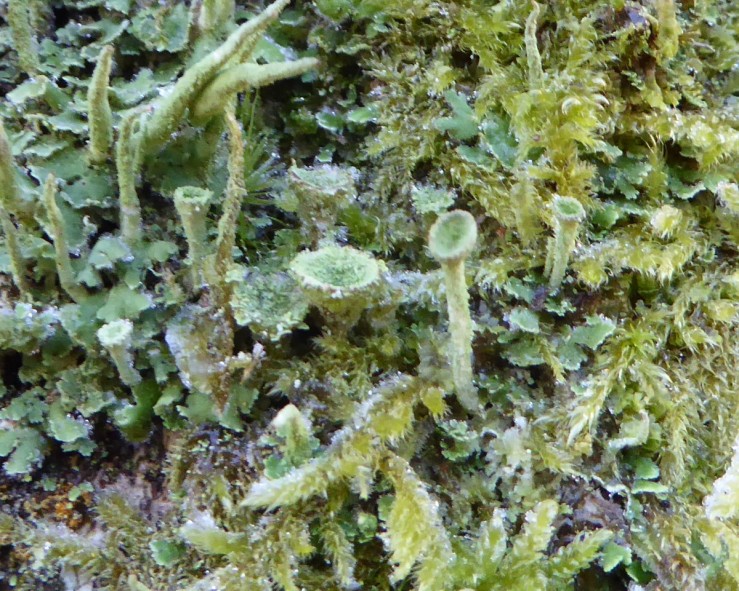
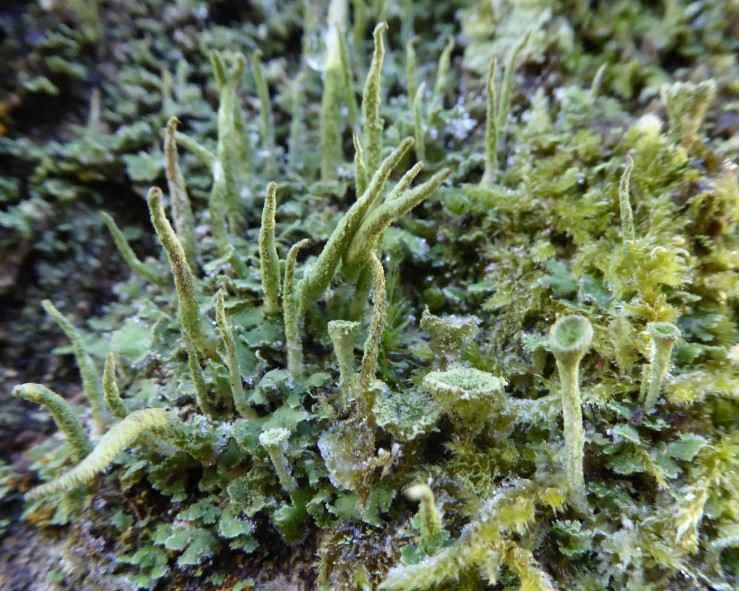
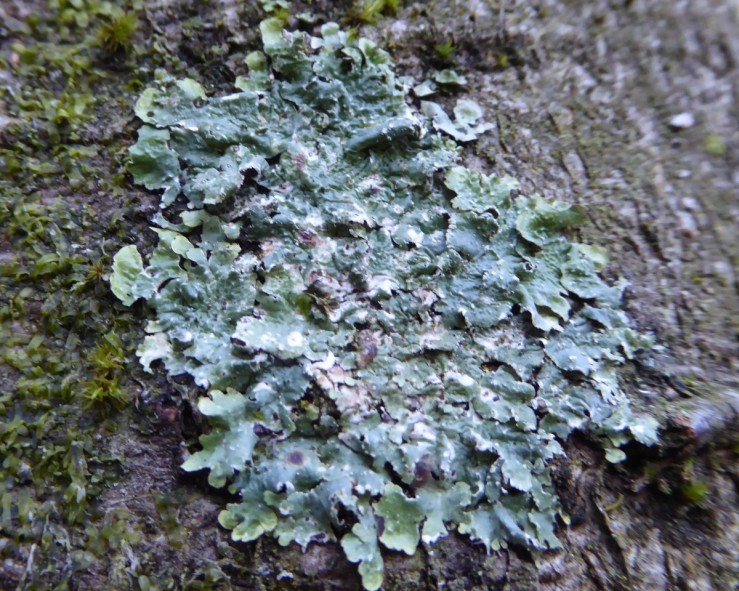
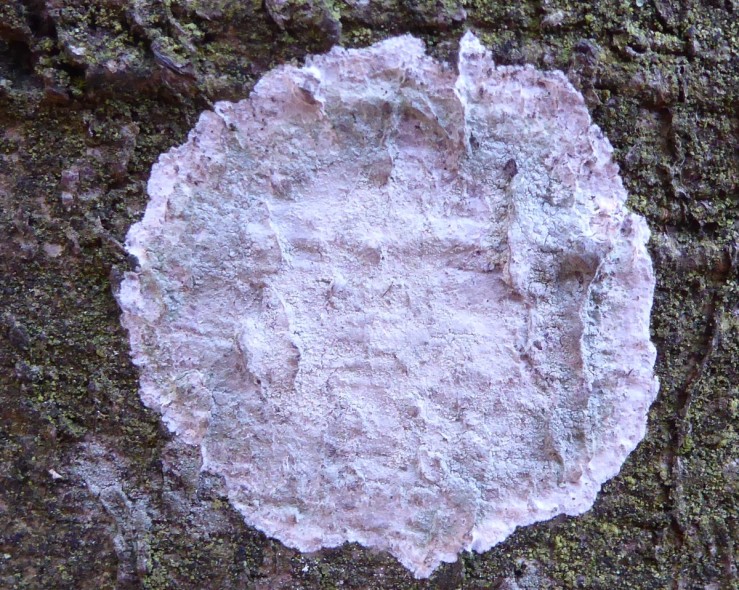
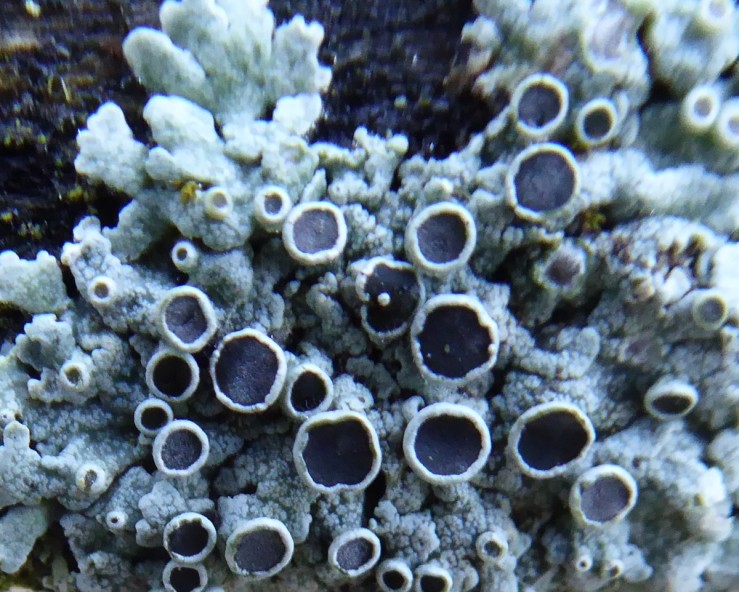
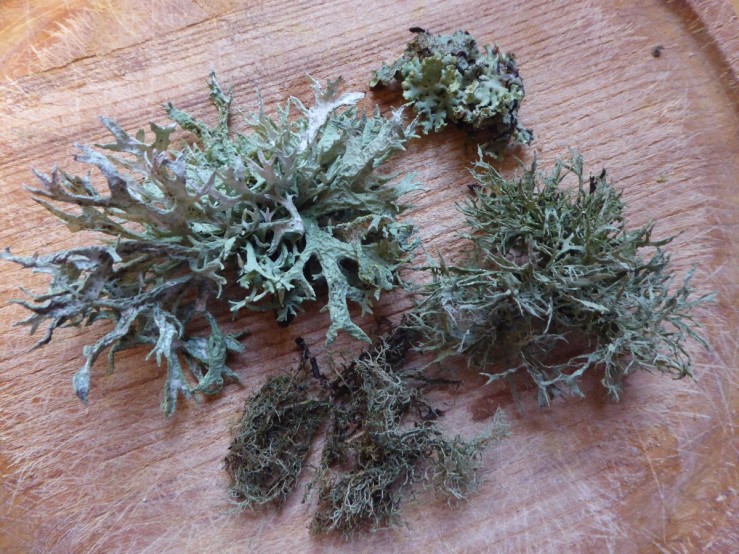
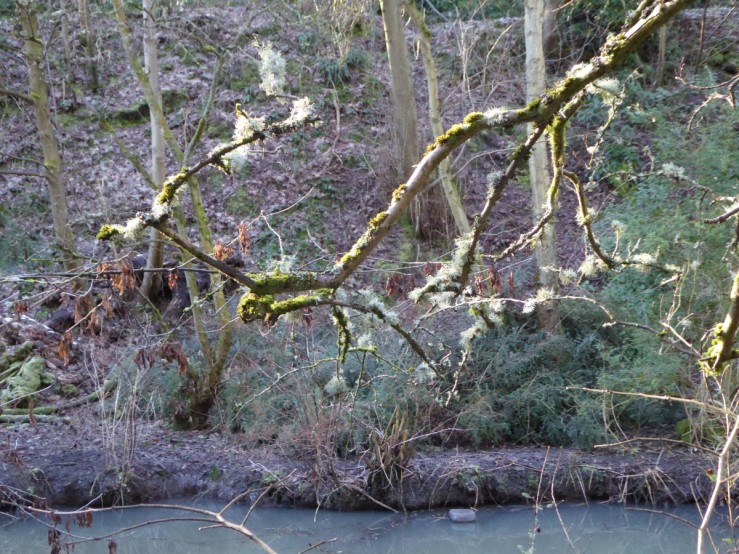
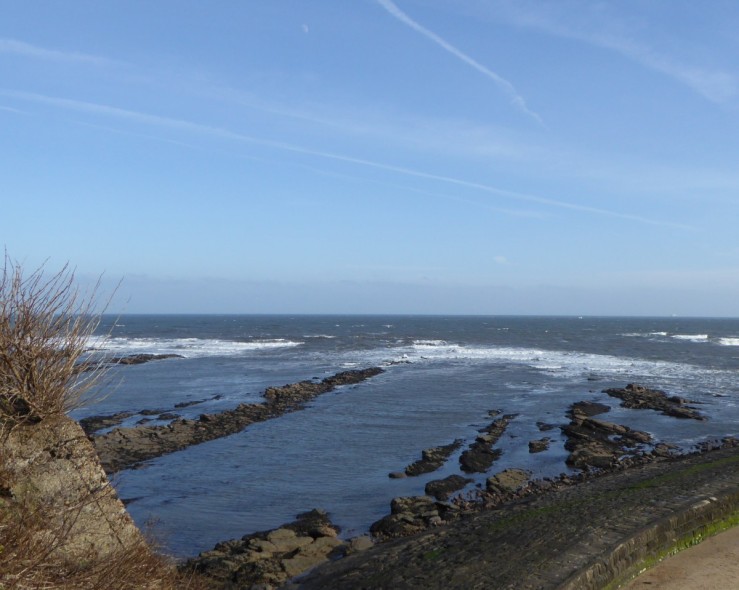
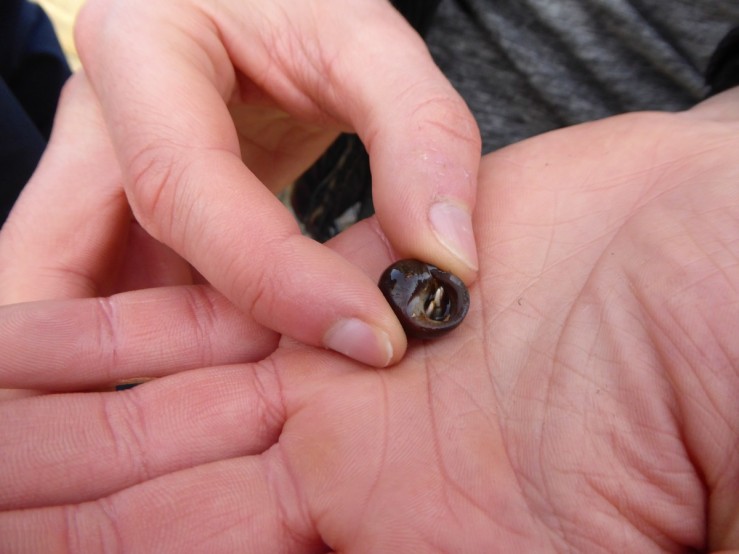
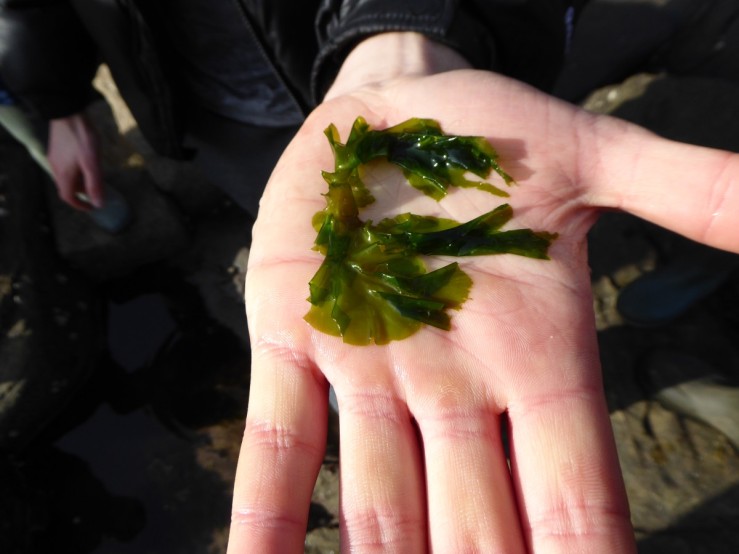
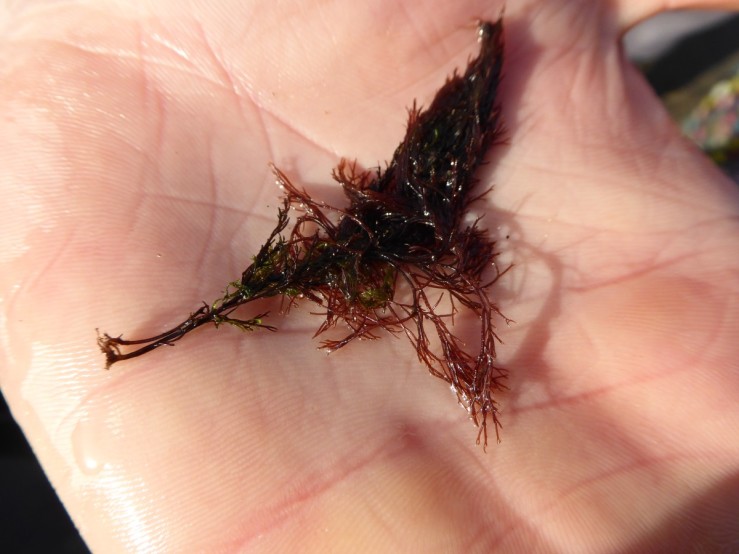
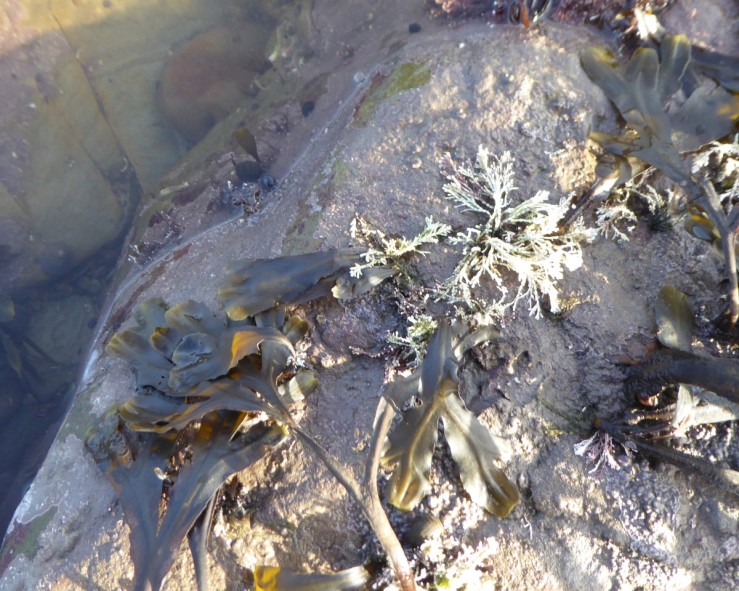
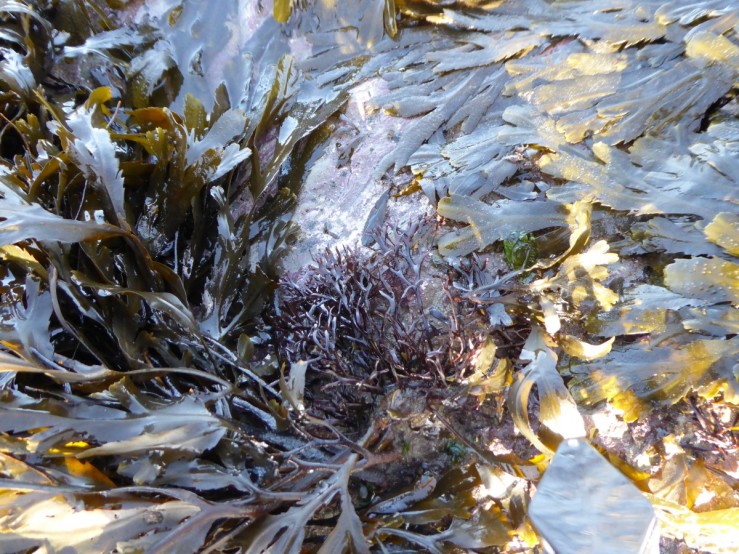
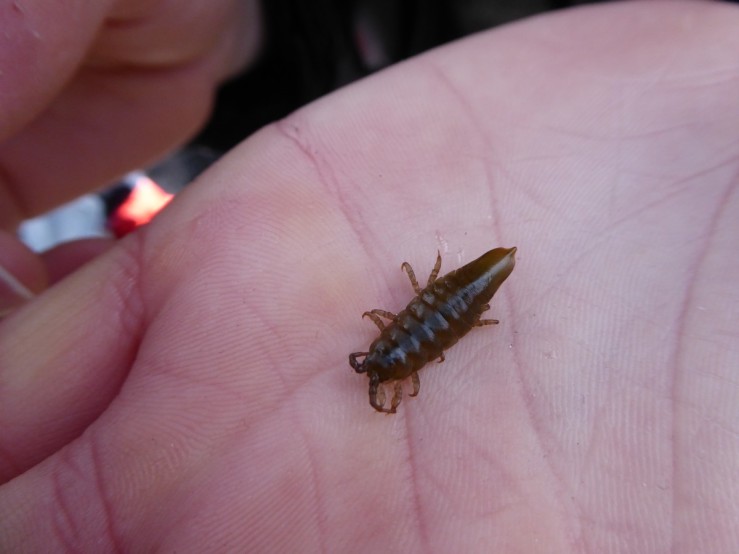
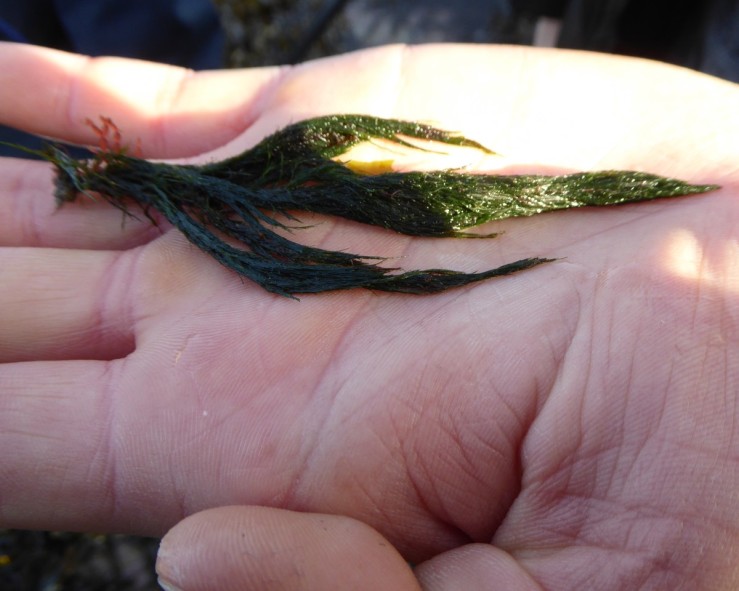
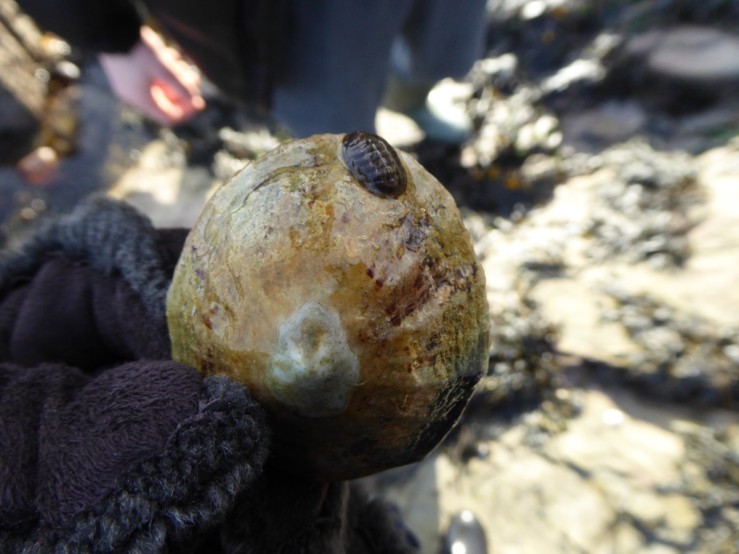
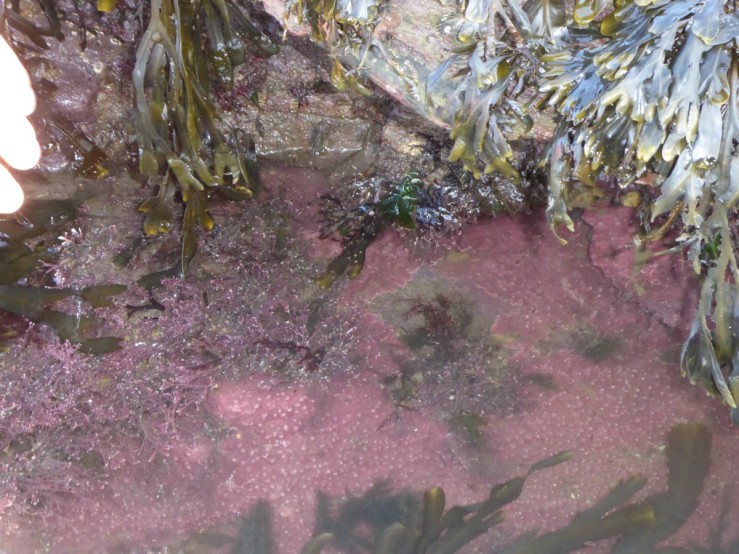 Barnacles covered the rocks providing grip for boots amongst the slippery seaweeds. On close up these are (Semibalanus balanoides). The green lichen could be Verrucaria mucosa.
Barnacles covered the rocks providing grip for boots amongst the slippery seaweeds. On close up these are (Semibalanus balanoides). The green lichen could be Verrucaria mucosa.